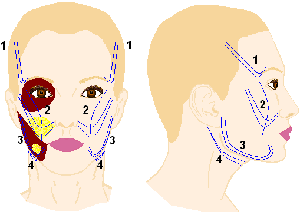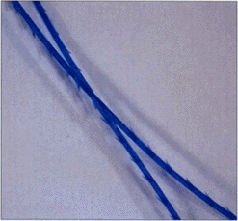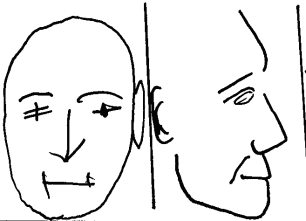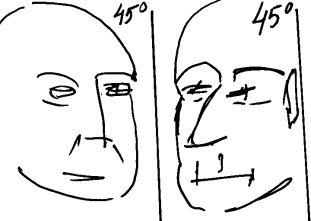

| Up |
|
Feather FaceLift/HappyLift (APTOS Thread Lift) As we begin to age the tissue becomes weakened, we lose facial fat and the underlying support structure becomes lax and ptotic (sagging). The areas to suffer this sagging is the cheeks, around the eyes, the brows, the jowls, and neck creating a longer, older looking face. Younger patients suffer from cheek and brow ptosis, as well, often prompting them to seek procedure which may be designed for individuals in need of more invasive means. There is now a less invasive procedure available which can lift, contour and suspend the sagging tissues of the face and neck. The Feather Lift Procedure can provide quick and relatively bloodless lifting for patients who may need only little to moderate rejuvenation. The Feather Lift is also been called the APTOS Lift, the APTOS Thread Lift and Suture Suspension Face Lift. Feather Lift is Kolster Methods, Inc.'s (K.M.I.) name for using monofilament, polypropylene threads with cogs or barbs, called also APTOS® threads to lift the underlying tissue and contour the face. Other thread manufacturers have coined the technique as the Silk Lift™, BPS® (Barbed Polypropylene Sutures) threads, and even the Russian Lift or Russian Threads. The APTOS threads have cogs or barbs which lie in one direction and open up, so to speak, when implanted into the subcutaneous fat and tugged into place. The tissue is caught slightly in these cogs and the tissue is then suspended and lifted. The threads are placed in carefully predetermined areas if the face to support the tissue and lift it. Even better, the results are improved over time as your collagen encapsulates and "bunches" around the threads causing an even further lifting effect. This procedure is considered much less invasive than traditional mid-face, face and brow lifts, requiring less operating room time and less downtime. The Feather Lift is also becoming popular with younger persons wishing for subtle changes or to possibly delay the signs of aging such as facial drooping. The areas which may be treated thus far with APTOS threads is the outer brow for zygomatic arch ptosis (1), the cheeks for buccal and infraorbital ptosis (2); the jaw line for mental ptosis such as jowls (3) and the neck for submental ptosis (4). Most younger patients will not need all these areas corrected. Common areas for younger patients are the cheeks and brows since they are the first in line to begin their descent. As you age the lower half of the face begins to sag as well. |
|
| Lift areas | APTOS thread |
 |
 |
|
THE BEST CANDIDATES FOR APTOS FACELIFT If you are in good physical and emotional/mental health, have realistic expectations, no serious health defects, have reasonably normal skin thickness and have the desire to rid yourself of loose sagging tissue of the face and neck, you may be a good candidate for a Feather Lift. The best candidate for a facelift is a man or woman whose face and neck have begun to sag, but whose skin still has some elasticity and whose bone structure is strong and well-defined. Most patients are in their forties to sixties, but facelifts can be done successfully on people in their seventies or eighties as well. PLANNING YOUR SURGERY The initial consultation with your doctor or Cosmetic Surgery Advisor is very important. The doctor or Cosmetic Surgery Advisor will need your complete medical history, so check your own records ahead of time and be ready to provide this information. Be sure to inform your doctor or Cosmetic Surgery Advisor if you have any allergies; if you're taking any vitamins, medications (prescription or over-the-counter), or other drugs; and if you smoke. Your doctor or Cosmetic Surgery Advisor will explain the techniques and anesthesia he or she will use, the type of facility where the surgery will be performed, and the risks and costs involved. Digital photos are very important (can be sent by mail). Add to every photo full name, birthday and the date when the photo was taken. Face photo from the front and also from both sides 90 deg and 45 deg.   PREPARING FOR YOUR SURGERY Your doctor or Cosmetic Surgery Advisor will give you specific instructions on how to prepare for surgery, including guidelines on eating and drinking, smoking, and taking or avoiding certain vitamins and medications. Carefully following these instructions will help your surgery go more smoothly. You will discuss what areas will be treated such as the brow lift, the cheek or jowl lift or even the neck lift. Not everyone will need all of these. A full set consists of 18 APTOS threads. A full face lift requires all 18 although not everyone may need a full lifting procedure. The threads required per area would be 2 for each brow, 3 for each cheek, 2 for each jaw line and 2 for each side of the neck -- equalling 18 threads. WHERE YOUR SURGERY WILL BE PERFORMED A facelift may be performed in a surgeon's centre. TYPES OF ANESTHESIA Most feather Lift procedures are performed under local anaesthesia with the addition of an oral sedative. THE SURGERY Your doctor then begins to infiltrate the area using a hypodermic needle with a local anaesthetics mixture comprised usually of Lidocaine, epinephrine, normal saline and a sodium carbonate buffer. This ensures that you will not feel any pain and also the epinephrine decreases the amount of blood loss and anaesthetics absorbed during the procedure. The epinephrine does this by temporarily narrowing the bore (vasoconstriction) of the blood vessel. After you are adequately anesthetized, your surgeon inserts a hollow troacar (a stainless tube with a needle-sharp end) at the specified entry points and through the subcutaneous fat along a specified plane. The tissue is dissected along this plane as needed based upon the individual patient. The exit point is then made and the APTOS thread is then inserted into the troacar. The thread is pulled through the other side of the troacar and the troacar removed, with the thread staying in place. The thread is positioned, tugging and testing its placement and finally anchored when the needed placement is achieved, the threads are cut just at the skin and inserted under the surface of the skin. Each area is treated and the treatment areas normally taped to prevent movement in the first few days. Excessive movement can dislodge the intended placement of the threads, altering the desired result. Remember that all doctors have different surgical protocols so please discuss with your surgeon his or her surgical technique as but may very well be different than the above. AFTER YOUR SURGERY Patients should not talk for the first 24 hours. They will find their facial movement limited for the first two weeks. It also may hurt to laugh for two weeks. No massage or facial pressure for one month. Maximum tensile strength usually occurs at 21 days. Immediate Results: Because of the volume of the local injected, the initial result is somewhat of a Howdy Doody appearance. This dissipates in the first 24 hours. Also their is little bruising due to the Lidocaine being mixed with epinephrine which is a vasoconstrictor. However the patient will go home with apparent white areas and red areas. This will change by the next morning or in a few hours when the normal blood flow returns as the epinephrine wears off. I believe that the patient may lose 30% of the initial result seen. It is true that fibrosis occurs and this tightens the area but most patients will only remember the volume in the cheeks directly after the procedure, which is a lot due to the anaesthetics. The results are subtle but quite beautiful. ALL SURGERY CARRIES SOME UNCERTAINTY AND RISK When a facelift is performed by a qualified plastic surgeon, complications are infrequent and usually minor. Still, individuals vary greatly in their anatomy, their physical reactions, and their healing abilities, and the outcome is never completely predictable. The threads must be cut low and the skin forced down. Still one may have a bubble under the skin. The options are to try to redirect the thread down or to make a small stab incision and cut the end. If the end of the thread actually ever comes out it, the correction is very simple. The thread is cut again to shorten and redirected downwards again. Complications that can occur include haematoma (a collection of blood under the skin), infection, and reactions to the anaesthesia. Poor healing of the skin is most likely to affect smokers. Scarring: Scarring from the needle injection is minimal but it is a large bore needle. Pre treating for very ethnic patients with Hydroquinone an assist in lessening the chances of hyper- pigmentation. |
|
|
Reval Clinic - KT Kliinik
Kaluritee 5A Tallinn ESTONIA
Email: revalclinic@revalclinic.com
|